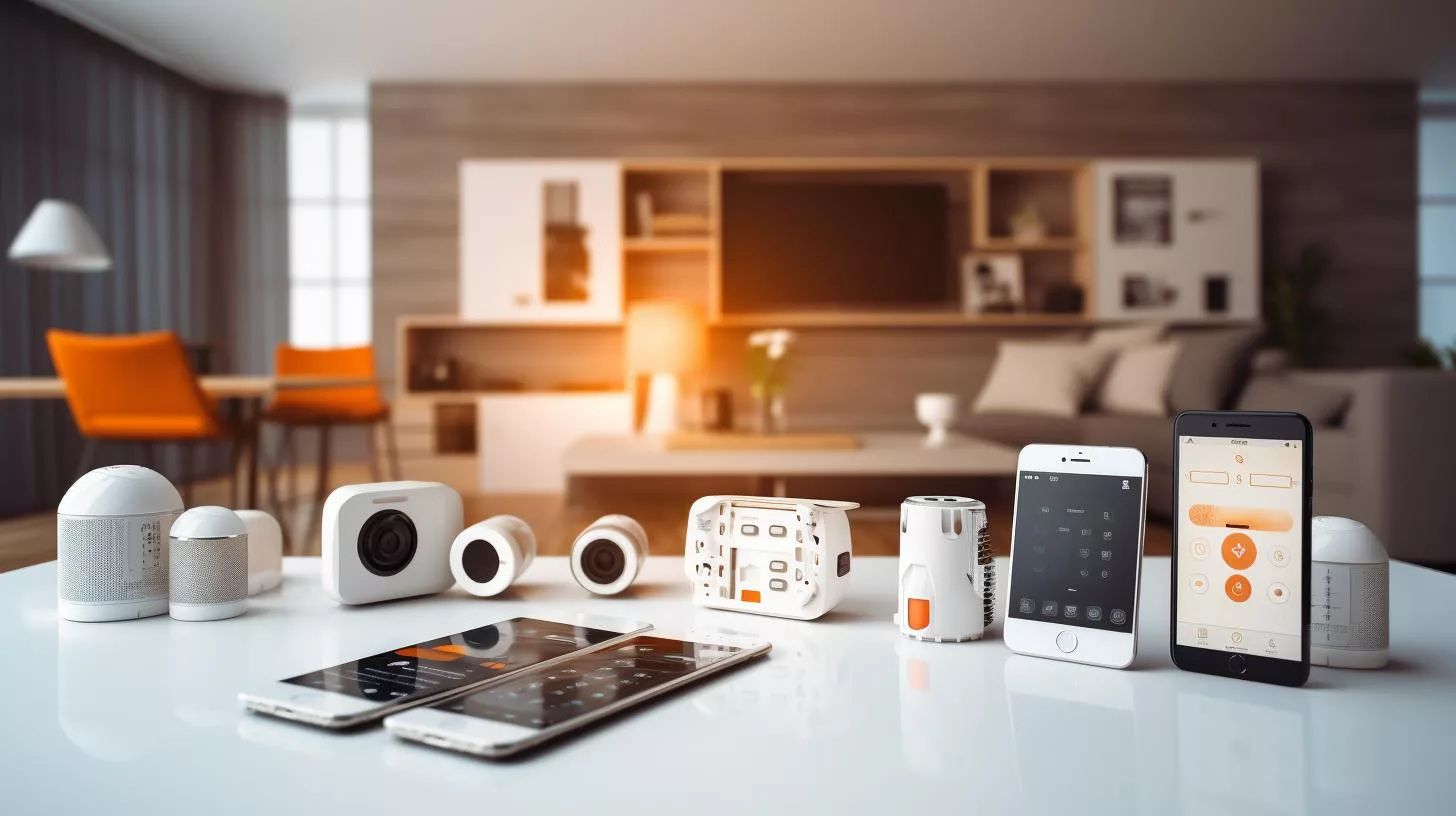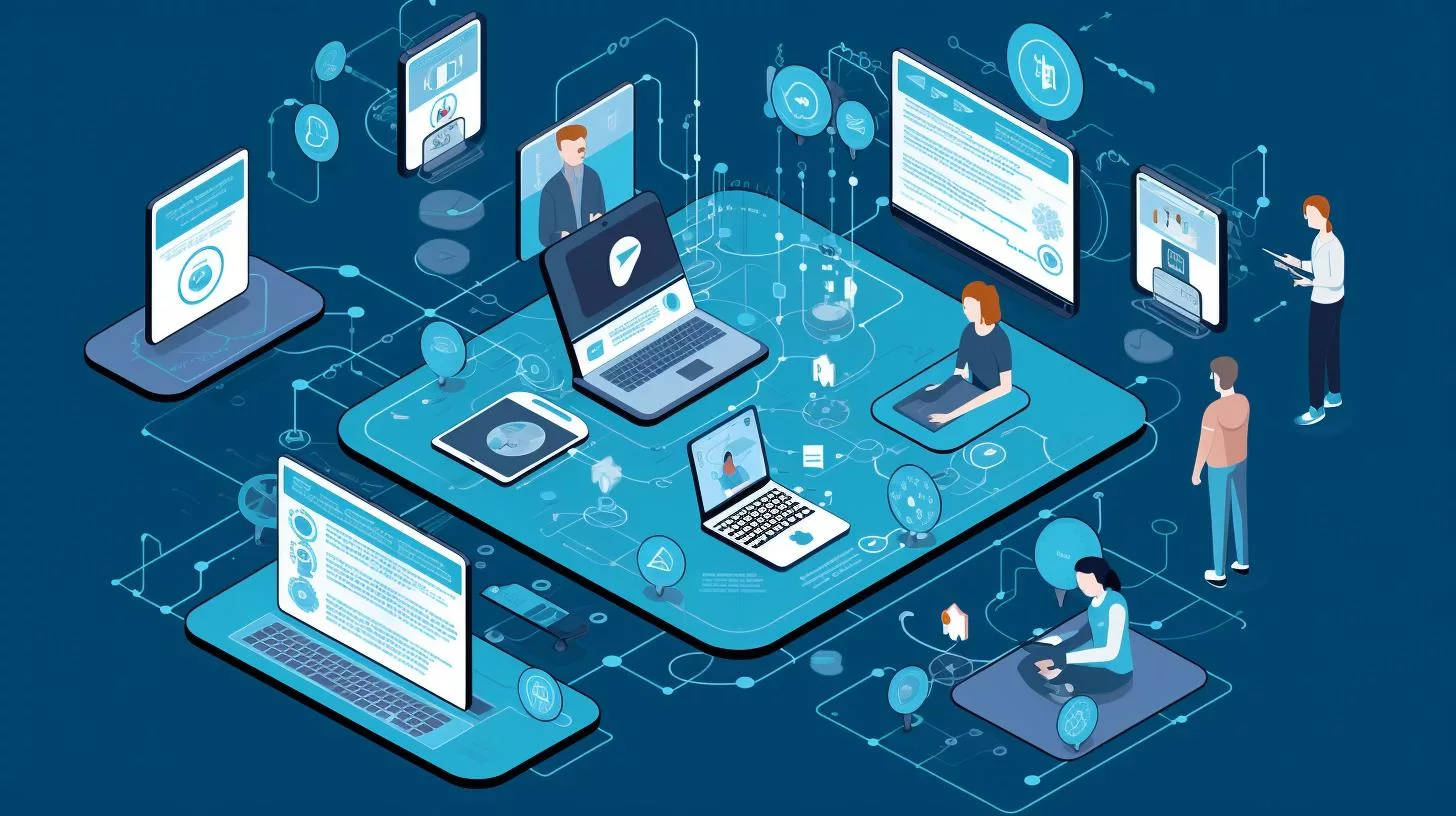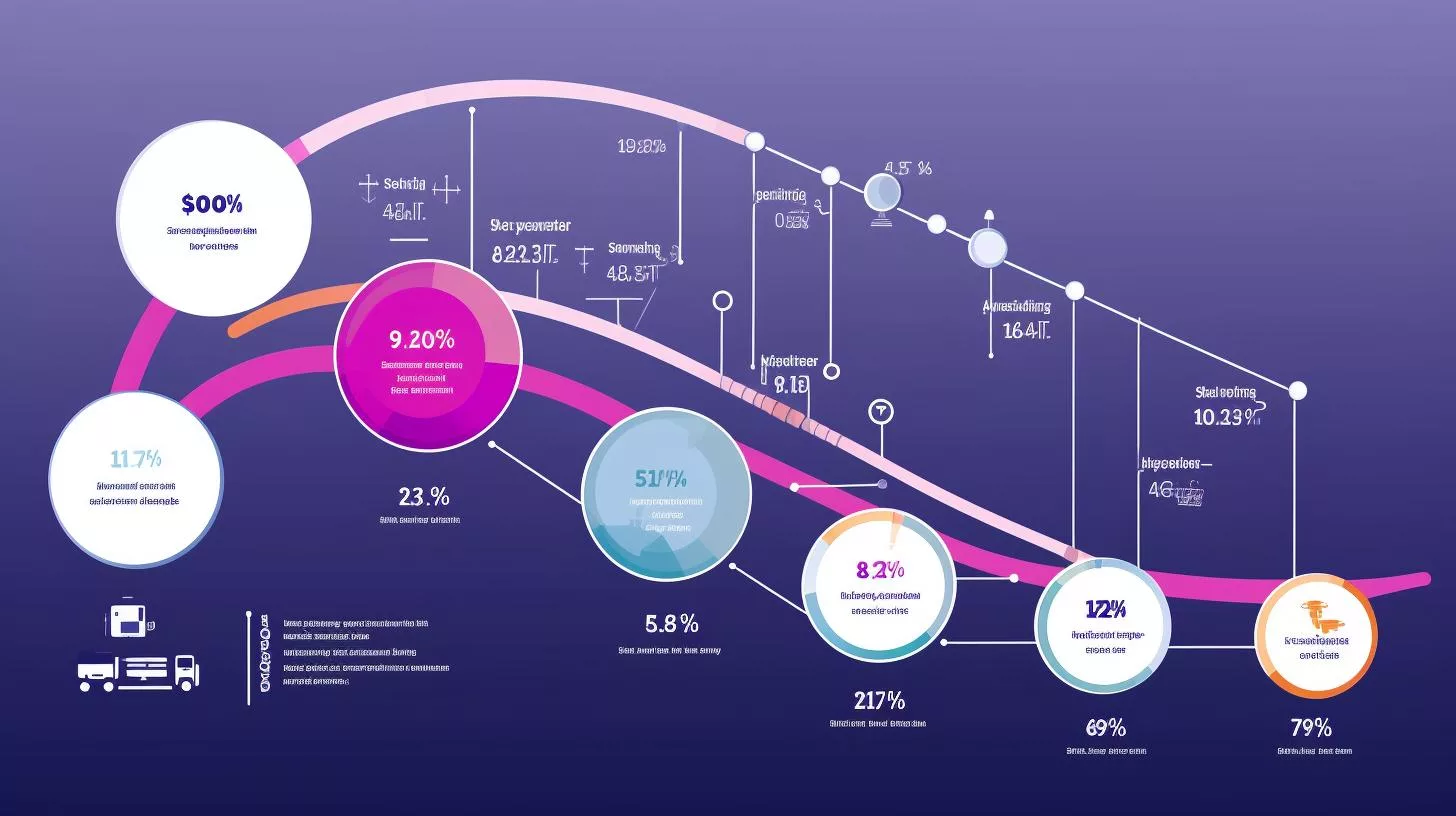The Internet of Things (IoT) has become an integral part of our daily lives, connecting devices and systems to make our lives more convenient, efficient, and enjoyable. However, with the increasing number of IoT devices comes the growing concern of privacy risks and challenges. In this article, we will explore the different aspects of IoT privacy concerns, the regulatory challenges and solutions, and provide practical tips on how to stay safe in an IoT-connected world.
What You Will Learn About IoT Privacy Concerns
- Definition of the Internet of Things (IoT) and its importance in today’s society.
- Risks and concerns related to IoT privacy, including data collection and profiling, lack of transparency and consent, data security and breach risks, and misuse of data.
- Regulatory challenges and potential solutions, such as privacy impact assessments, user-centric design, and data minimization.
- Future trends and implications of IoT, including the growth of IoT devices, the role of artificial intelligence and machine learning, and the need for collaborative efforts for IoT privacy.
- The importance of addressing IoT privacy concerns and the call to action for a trustworthy IoT ecosystem.

What is the Internet of Things?
A. Definition of IoT
The Internet of Things (IoT) refers to a network of physical objects, devices, vehicles, buildings, and other items that are connected to the internet and can communicate with each other. These devices are embedded with sensors, software, and other technologies that allow them to collect and exchange data, making them “smart” and capable of autonomous decision-making.
B. Examples of IoT Devices
The IoT ecosystem includes a wide range of devices, such as smart home devices (e.g., thermostats, security cameras, light bulbs), wearable devices (e.g., fitness trackers, smartwatches), healthcare devices (e.g., insulin pumps, heart monitors), industrial devices (e.g., sensors, robots), and transportation devices (e.g., cars, drones).
C. Importance of IoT in Today’s Society
IoT technology has revolutionized many aspects of our lives, from healthcare to transportation, from home automation to industrial automation. IoT devices enhance our productivity, efficiency, and convenience, making our lives easier and more comfortable. However, the widespread adoption of IoT devices has also raised concerns about privacy risks and challenges.

IoT Privacy Risks and Concerns
A. Data Collection and Profiling
One of the primary concerns of IoT privacy is the collection of personal data by IoT devices. These devices can collect a vast amount of data, including personal information, location data, biometric data, and behavioral data. This data can be used to create detailed profiles of individuals, which can be sold to advertisers, insurers, or other third parties.
1. Types of Data Collected
IoT devices can collect different types of data, such as:
- Personal information (e.g., name, address, email, phone number)
- Location data (e.g., GPS coordinates, Wi-Fi network information)
- Biometric data (e.g., fingerprints, facial recognition)
- Behavioral data (e.g., browsing history, purchase history, social media activity)
2. Risks of Data Profiling
Data profiling can have significant privacy risks, such as:
- Discrimination: Profiling based on age, gender, race, or other personal characteristics can lead to discrimination in areas such as employment, housing, or credit.
- Stalking: Location data can be used to track an individual’s movements, which can be used for stalking or other malicious purposes.
- Identity theft: Personal information can be used for identity theft, fraud, or other criminal activities.
B. Lack of Transparency and Consent
Another concern of IoT privacy is the lack of transparency and consent. Many IoT devices collect data without the user’s knowledge or consent, which can lead to privacy violations and distrust.
1. How IoT Devices Collect Data Without Consent
IoT devices can collect data without the user’s knowledge or consent through:
- Default settings: Many IoT devices have default settings that collect data automatically, without giving the user the option to opt-out.
- Lack of notification: Some IoT devices do not provide clear notifications when data is being collected, making it difficult for users to understand what data is being collected and how it is being used.
- Complex privacy policies: Some IoT devices have lengthy and complex privacy policies that are difficult to understand, leading users to accept the policies without realizing the implications.
2. Importance of Transparency and Control
Transparency and control are essential for building trust between users and IoT devices. Users should have clear information about what data is being collected, how it is being used, and who has access to it. They should also have the option to control their data, such as opting-out of data collection or deleting their data.

C. Data Security and Breach Risks
IoT devices are also vulnerable to cybersecurity risks and data breaches, which can lead to privacy violations and other malicious activities.
1. Vulnerabilities of IoT Devices
IoT devices can be vulnerable to cyber attacks due to:
- Weak passwords: Many IoT devices have weak passwords or default passwords that are easy to guess or crack.
- Lack of encryption: Some IoT devices do not use encryption to protect data in transit, making it easier for hackers to intercept and steal data.
- Unpatched software: Some IoT devices do not receive software updates or security patches, leaving them vulnerable to known vulnerabilities and exploits.
2. Cybersecurity Risks and Threats
Cybersecurity risks and threats to IoT devices include:
- Malware and viruses: IoT devices can be infected with malware and viruses, which can steal data, spy on users, or disrupt the operation of the device.
- Botnets: IoT devices can be recruited into botnets, which can be used for distributed denial-of-service (DDoS) attacks or other malicious activities.
- Ransomware: IoT devices can be targeted with ransomware, which can encrypt data and demand payment in exchange for the decryption key.

D. Misuse and Abuse of Data
Misuse and abuse of data collected by IoT devices can have severe ethical and legal implications, such as:
1. Ethical and Legal Implications
- Discrimination: The use of data profiling can lead to discrimination, such as denying employment or insurance based on personal characteristics.
- Surveillance: The use of location data or other personal data for surveillance purposes can violate privacy and civil liberties.
- Manipulation: The use of personal data to manipulate user behavior, such as through targeted advertising or propaganda, can be unethical and manipulative.
2. Examples of Misuse of IoT Data
There have been several examples of misuse of IoT data in recent years, such as:
- Smart TV spying: In 2017, it was revealed that some smart TV manufacturers were collecting data on users’ viewing habits without their consent.
- Amazon Alexa recordings: In 2019, it was revealed that Amazon employees were listening to and transcribing recordings of users’ interactions with Alexa without their knowledge or consent.
- Fitness tracker data: In 2018, it was revealed that the Strava fitness app was sharing users’ location data, revealing the location of secret military bases and other sensitive locations.
Case Study: Sarah’s Experience with Data Profiling
Data Collection and Profiling
Sarah, a working professional and IoT enthusiast, recently purchased a smart thermostat for her home. She was excited about the convenience it offered in controlling the temperature remotely using her smartphone. However, Sarah soon noticed some unexpected changes in her daily routine.
The smart thermostat, unbeknownst to Sarah, was collecting data on her energy usage patterns, temperature preferences, and even her daily schedule. Over time, the device started profiling her habits and adjusting the temperature automatically based on its analysis.
Sarah started feeling uncomfortable with this level of data collection and profiling. She realized that the smart thermostat had access to sensitive information about her daily routines and lifestyle. This raised concerns about her privacy and the vulnerability of this data to potential misuse.
Sarah’s experience highlights the risks of data collection and profiling associated with IoT devices. It serves as a reminder that even seemingly innocuous devices can gather personal information without explicit consent or awareness. This case study emphasizes the importance of understanding the types of data collected by IoT devices and the potential risks of data profiling.
Through stories like Sarah’s, we can better comprehend the potential privacy concerns and risks that arise from the pervasive use of IoT devices. It underscores the need for transparency, control, and user-centric design to ensure a safe and secure IoT ecosystem for all users.
Regulatory Challenges and Solutions
The regulatory landscape for IoT privacy is complex and fragmented, with different laws and regulations in different countries and regions. However, there are some solutions and best practices that can help address IoT privacy concerns.
A. Current Privacy Regulations and Laws
There are several privacy regulations and laws that apply to IoT devices, such as:
- General Data Protection Regulation (GDPR): The GDPR is a regulation in the European Union that applies to companies that collect personal data of EU citizens, regardless of where the company is located.
- California Consumer Privacy Act (CCPA): The CCPA is a law that applies to companies that collect personal data of California residents, regardless of where the company is located.
- Children’s Online Privacy Protection Act (COPPA): COPPA is a law that applies to websites and online services that collect personal data of children under 13 years of age.
1. Limitations of Existing Laws
Existing privacy laws have some limitations when it comes to IoT devices, such as:
- Scope: Some laws may not apply to all types of IoT devices or may have limited jurisdiction, making it difficult to enforce them.
- Enforcement: Some laws may lack adequate enforcement mechanisms or penalties, making it easier for companies to ignore them.
- Compliance: Some laws may be difficult to comply with, especially for small or medium-sized enterprises (SMEs) that may lack the resources to implement complex privacy measures.
2. Need for Stronger Regulations
There is a need for stronger regulations and standards for IoT devices that take into account the unique privacy risks and challenges of these devices. These regulations should aim to:
- Increase transparency and consent: IoT devices should provide clear notifications and options for users to control their data.
- Enhance security and privacy: IoT devices should use encryption, strong passwords, and other security measures to protect data.
- Promote accountability and responsibility: Companies that create or sell IoT devices should be held accountable for any privacy violations or breaches that occur.
B. Privacy Impact Assessments
Privacy Impact Assessments (PIAs) are a useful tool for assessing the privacy risks and challenges of IoT devices. PIAs can help identify potential privacy risks and provide recommendations for mitigating these risks.
1. Importance of PIAs
PIAs are essential for building privacy into IoT devices from the outset. PIAs can help:
- Identify privacy risks and challenges: PIAs can help identify potential privacy risks and challenges of IoT devices, such as data collection, profiling, security, and misuse.
- Evaluate the effectiveness of privacy measures: PIAs can help evaluate the effectiveness of privacy measures implemented by IoT devices and recommend improvements if necessary.
- Build trust with users: PIAs can help build trust with users by demonstrating a commitment to privacy and transparency.
2. Implementing PIAs for IoT Devices
Implementing PIAs for IoT devices can be challenging, especially for SMEs that may lack the resources or expertise to conduct them. However, there are some best practices that can make the process easier, such as:
- Use templates and guidelines: There are several templates and guidelines available for conducting PIAs for IoT devices, such as those provided by the European Union Agency for Cybersecurity (ENISA) or the International Association of Privacy Professionals (IAPP).
- Involve stakeholders: PIAs should involve all stakeholders, such as developers, designers, marketers, and users, to ensure that all perspectives are taken into account.
- Repeat the process: PIAs should be repeated periodically to ensure that privacy risks and challenges are continuously evaluated and addressed.
C. User-Centric Design
User-centric design is a design approach that puts the user at the center of the design process, ensuring that the user’s needs, preferences, and values are taken into account. User-centric design is essential for building trust and engagement with IoT devices.
1. Importance of User-Centric Design
User-centric design is essential for IoT devices because it can:
- Build trust with users: User-centric design can build trust with users by demonstrating a commitment to privacy, transparency, and usability.
- Improve usability and engagement: User-centric design can improve the usability and engagement of IoT devices by making them easier to use and more engaging.
- Enhance innovation and creativity: User-centric design can enhance innovation and creativity by encouraging designers and developers to think outside the box and come up with new and exciting solutions.
2. Examples of User-Centric IoT Devices
There are several examples of user-centric IoT devices that have been designed with privacy and usability in mind, such as:
- Apple HomeKit: Apple HomeKit is a smart home platform that emphasizes privacy and security, allowing users to control their smart home devices with ease and confidence.
- Mycroft AI: Mycroft AI is an open-source voice assistant that prioritizes privacy, allowing users to control their data and customize their experience.
- LIFX: LIFX is a smart light bulb that offers a simple and intuitive user interface, allowing users to control their lights with ease and flexibility.
D. Data Minimization
Data minimization is a privacy principle that emphasizes the collection and storage of only the minimum amount of data necessary for a specific purpose. Data minimization is essential for reducing privacy risks and challenges associated with IoT devices.
1. Importance of Data Minimization
Data minimization is important for IoT devices because it can:
- Reduce privacy risks: Data minimization can reduce privacy risks by minimizing the amount of data that can be collected, used, or disclosed.
- Enhance transparency and trust: Data minimization can enhance transparency and trust by demonstrating a commitment to privacy and limiting the potential for misuse.
- Improve efficiency and effectiveness: Data minimization can improve efficiency and effectiveness by focusing on the data that is most relevant and useful for a specific purpose.
2. Implementing Data Minimization for IoT Devices
Implementing data minimization for IoT devices can be challenging, especially for devices that are designed to collect and process large amounts of data. However, there are some best practices that can make the process easier, such as:
- Define the purpose: IoT devices should define the purpose of data collection and only collect data that is necessary for that purpose.
- Limit data retention: IoT devices should limit the retention of data and delete data when it is no longer necessary.
- Use data anonymization: IoT devices should use data anonymization techniques to minimize the risks of data profiling and misuse.

Future Trends and Implications
The future of IoT is exciting and full of potential, but it also presents new privacy risks and challenges. In this section, we will explore some of these trends and implications.
A. Growth of IoT and Potential Risks
The growth of IoT is expected to continue in the coming years, with more devices and systems connected to the internet than ever before. This growth presents new privacy risks and challenges, such as:
- Data overload: The sheer amount of data generated by IoT devices can be overwhelming, making it difficult to analyze and interpret.
- Interoperability issues: IoT devices from different manufacturers may not be able to communicate with each other, leading to compatibility issues and security vulnerabilities.
- Lack of standardization: The lack of standardization in IoT devices can lead to confusion and complexity for users, making it difficult to understand and control their data.
B. Artificial Intelligence and Machine Learning
Artificial intelligence (AI) and machine learning (ML) are expected to play an increasingly important role in IoT devices, enabling devices to learn from data and make autonomous decisions. However, the use of AI and ML in IoT devices also presents new privacy risks and challenges.
1. Potential Risks of AI and ML
The potential risks of AI and ML in IoT devices include:
- Bias and discrimination: AI and ML algorithms can be biased and discriminatory, leading to unfair outcomes for certain groups of individuals.
- Lack of transparency: AI and ML algorithms can be opaque and difficult to understand, making it difficult for users to know how their data is being used.
- Security vulnerabilities: AI and ML algorithms can be vulnerable to cyber attacks and hacking, leading to privacy violations and other malicious activities.
2. Ethical Implications of AI and ML in IoT
The ethical implications of AI and ML in IoT devices are complex and multifaceted, requiring a careful balance between innovation and responsibility. Some of the ethical implications include:
- Privacy and data protection: AI and ML algorithms should respect users’ privacy and data protection rights, minimizing the risks of data profiling and misuse.
- Transparency and explainability: AI and ML algorithms should be transparent and explainable, allowing users to understand how their data is being used and why certain decisions are being made.
- Accountability and responsibility: Companies that create or sell AI and ML-powered IoT devices should be held accountable for any privacy violations or breaches that occur.
C. Collaborative Efforts for IoT Privacy
The challenges and risks of IoT privacy require collaborative efforts from different stakeholders, such as industry, government, and civil society. These collaborative efforts should aim to:
- Foster innovation and creativity: Collaborative efforts should foster innovation and creativity by encouraging the development of new and exciting solutions that prioritize privacy and security.
- Promote transparency and accountability: Collaborative efforts should promote transparency and accountability by ensuring that companies are held responsible for any privacy violations or breaches that occur.
- Build public awareness and education: Collaborative efforts should build public awareness and education by providing users with the knowledge and tools they need to stay safe in an IoT-connected world.
In conclusion, IoT privacy concerns are an important aspect to consider when using IoT devices. It is crucial to understand the risks associated with data collection, lack of transparency, data security, and misuse of data. By implementing strong regulations, conducting privacy impact assessments, adopting user-centric design, and practicing data minimization, we can address these concerns and ensure a safer and more privacy-conscious IoT-connected world. Collaborative efforts from stakeholders are also necessary to foster innovation, promote transparency, and educate the public about IoT privacy. Stay informed and take necessary precautions to protect your privacy in an increasingly connected world.
